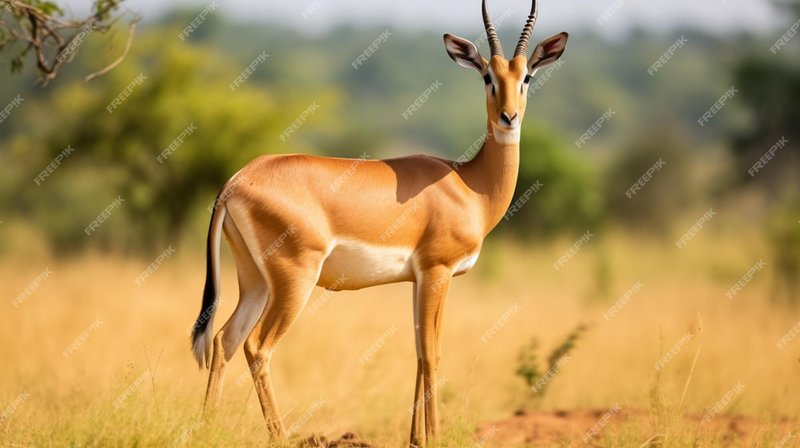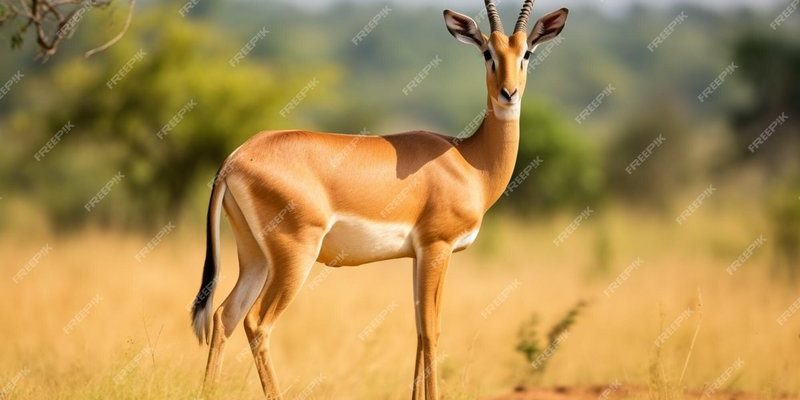
Antelopes, with their varied species like the majestic sable and the swift springbok, contribute to their environments in fascinating ways. They help shape the landscape and provide food for other animals, making them key players in their ecosystems. Let’s dive deeper into the ways these athletic animals make a difference in their world.
Antelope as Herbivores: Shaping Plant Life
Antelopes are primarily herbivores, which means their diet consists mainly of plant material. This is a big deal for their ecosystems. By grazing on grass and browse, they help control plant populations. If antelopes weren’t there to nibble on certain plants, some species could take over, choking out others and reducing biodiversity.
Here’s the thing: their grazing habits can actually stimulate new growth. When antelopes munch on plants, it encourages them to sprout new shoots, which can be more nutritious. It’s like nature’s way of pruning the garden and making sure the plants can thrive. It keeps everything balanced, ensuring that no single species dominates the landscape.
Additionally, antelopes tend to prefer certain types of vegetation over others. This selective feeding can help maintain the variety of plant life, as they may target weaker, less competitive plants. This behavior promotes a rich tapestry of flora, providing different habitats for other wildlife in the process.
The Food Chain: Antelopes as Prey
You might think of antelopes as mere grazers, but they play a critical role higher up in the food chain. As prey animals, they are a key food source for a number of predators, including lions, cheetahs, and hyenas. Without antelopes, these predators would struggle to find adequate nourishment.
In nature, every action has a reaction. When antelopes thrive, so do their predators. A healthy antelope population supports larger predator groups, leading to a balanced ecosystem. However, if antelope numbers decline due to overhunting or habitat loss, it can cause a ripple effect, leading to decreased predator populations and, ultimately, potential ecosystem collapse.
These interactions underscore the significance of antelopes in their habitats. They help sustain a healthy predator-prey dynamic that is essential for ecological balance.
Antelopes and Habitat Maintenance
Antelopes don’t just graze—they also help maintain their habitats in other ways. As they move through the landscape, they create trails and pathways that benefit other animals. These paths can make it easier for smaller creatures to navigate their environment, increasing overall movement and activity within the ecosystem.
Moreover, antelopes can influence the distribution of seeds. When they eat fruits and plants, they often carry seeds through their digestive systems. Once those seeds are passed out in their waste, they can sprout and grow into new plants, helping to spread vegetation in the area. In this way, antelopes help maintain plant diversity and promote the growth of new flora essential for various wildlife.
You might say they act as nature’s gardeners, tending to the earth as they move along. This process helps create lush habitats that many other species depend upon for survival.
Antelopes and Social Structure
Antelopes often exist in groups, which not only offers protection but also plays a significant role in their social dynamics. These groups can vary from small family units to larger herds. Living in groups helps antelopes stay alert to danger; they can spot predators more easily and react faster as a team.
The social interactions among antelopes also help teach younger members essential survival skills. Young antelopes learn what to eat, where to find water, and how to respond to threats by observing adults. This transfer of knowledge is crucial for maintaining healthy populations.
Their social structure also facilitates breeding, ensuring that genetic diversity remains strong within the population. When young antelopes are born, they benefit from the protection and care of the entire herd, helping to improve their chances of survival.
Antelopes as Indicators of Ecosystem Health
Honestly, antelopes are like early warning systems for the health of their ecosystems. Changes in their population numbers can indicate environmental shifts. If antelope populations are declining, it could signify issues like habitat destruction, drought, or disease.
Conservationists and ecologists often monitor antelope populations to gauge the overall well-being of their habitats. For example, in areas where antelopes are thriving, it’s a good sign that the ecosystem is stable and flourishing. Conversely, if their numbers drop, it might trigger conservation efforts to address underlying problems.
This role as indicators can also raise awareness about the importance of protecting their habitats. By understanding the significance of antelopes in our ecosystems, we can take steps to preserve the environments they call home.
Antelopes might seem like simple grazing animals on the surface, but their roles in the ecosystem are far more complex and crucial. From shaping plant life and supporting predator populations to maintaining habitats and serving as indicators of ecological health, these animals really do a lot for their environment.
So, the next time you spot an antelope jumping gracefully across the plains, remember that it’s more than just a beautiful sight. It’s a vital piece of a larger puzzle in nature, working tirelessly to keep the ecosystem in balance. Understanding their roles not only deepens our appreciation for wildlife but also emphasizes the importance of conservation efforts to protect these incredible animals and their habitats.

